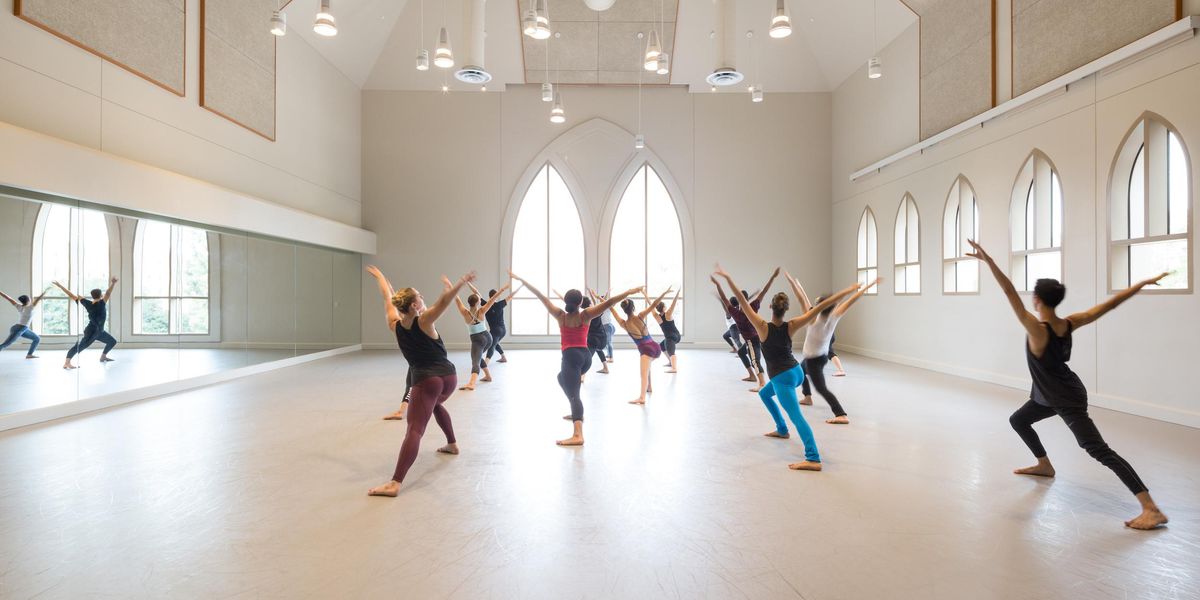Why I Choreograph: Stephen Petronio
Stephen Petronio’s limb-flinging, inside-out choreography can take your breath away. In the early 1990s, his men sometimes wore corsets and his women drove through space like cannonballs, giving his work an androgynous edge. Later works range from the strange, bracing beauty of
Lareigne (1995), to the desperate, existential chic of his solo Broken Man (2002).
Born in Newark, NJ, Petronio didn’t start dancing until he took contact improvisation at Hampshire College. After graduating, he danced with Trisha Brown from 1979 to 1986—with distinction. In addition to the 35-plus works he’s made for his own company, he’s been commissioned by Ballett Frankfurt, Lyon Opera Ballet, The Washington Ballet, and many other companies around the world. This month he tours with Stephen Petronio Company to Milwaukee, UC Santa Barbara, UC Riverside, and Scottsdale, AZ. When not onstage or in the studio, he’s working on a memoir called Notes from a Life in Motion.
It starts like this: One word at a time, and a story builds. So too in dance: One step at a time, and ideas become flesh.
Movement pushes forward through the pelvis and ripples up the spine in a sequence, flicking out the top of the head. Arms fly out like blades that windmill the torso clockwise in space, a whiplash flight. Stop.
One more time, now faster and to the left.
Stop? Restless. I can’t sit still, uncomfortable in my skin. Commands of “Stop fidgeting!” echo from as early as I can remember. I need to move, to travel, to feel the speed of forward motion, body cutting through space, in order to feel at all.
My imagination “powers on” in transit. Bike, car, train or plane, the act of moving forward, of rocketing through space, of propulsion and velocity’s thrust forward, stirs some deep, innate force in me. Forward motion precipitates mental motion.
Before dance there was a void in my life. I was terribly shy and inarticulate. When I found movement, the day-to-day practice of inventing, learning, mastering motion, my whole world changed. I relaxed. Verbal skill, social grace, and levity followed. I found confidence in motion and chose a life in it.
When I slip into space, break into movement, there’s a merging of internal and external worlds—what’s inside meeting what’s out there. The edge of my skin pierces space like a dive into a breaking wave—the exhilaration of body in action.
I venture into a world of intuitive physical intelligence, of space/time/rhythm that supersedes the verbal one. It’s a meditative “animal mind” of reflex that only careening fields of movement can satisfy.
Building a dance is like forging a path through the jungle without a compass: I know I can go but without an idea of exactly where. I head out into the unknown to meet a space previously unimagined. I learn to trust the process of extending my boundary. When I hit a wall now I understand there’s something beyond. There is never “no new possibility.” Miraculously, the wall disappears. Potential.
The reasons I choreograph shift continually: a deep sense of self in my skin, of living in my body; the pleasure of physical mastery, of play in disorientation, and of unearthing new movement. Polyrhythm (several rhythms jangling in the body simultaneously) is addictive. What a mystery to follow concurrent pathways in the body and in space. Awareness.
And when I achieve a section of choreography that gets to the heart of some unspeakable rhythmic twist, one that elicits a collective exhale from an audience, it’s an electrifying social moment. Connection.
I’m ever grateful for the way I spend my day. I go into a room barefoot and barely dressed, with some of the most sophisticated bodies on the planet. We conjure worlds out of nothing, movement that feels uncharted and beyond our “rational skills.” It leads to a place that’s intense and emotional—uncomfortable sometimes—yet revelatory. It’s unthinkable not to follow this path. The longer I continue, the more interesting a life hunting the ephemeral becomes. It’s like when you’re challenged by an unknown movement and it seems impossible to get. A few days of wrangling render it magically doable, effortless even. And the easier it becomes, the more one perceives about the bigger picture that this moment is part of. Expansion.
Photo by Matthew Karas.




